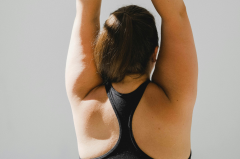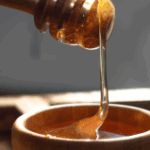Somatic practices offer a future-focused approach to holistic wellness, providing gentle yet powerful benefits for overall health. Somatic exercises focus on the mind-body connection, offering a transformative approach to physical and mental wellbeing. Unlike traditional fitness routines that often emphasise external performance and strength, somatic practices focus on internal awareness and the subtleties of movement. By helping you to foster greater self-awareness, somatic exercises can alleviate pain, improve posture and enhance overall mobility. Moreover, they encourage a deeper understanding of how stress and emotions manifest physically, promoting holistic healing that extends beyond the physical body to encompass mental and emotional wellbeing.
With this etymology, a somatic movement is practised consciously with the intention of focusing on the internal experience of the movement rather than the external appearance or the result of the movement. Technically, any movement can be somatic if you focus your attention on what you’re feeling in your body as you move. It is about removing the numbness that many of us have become glued in. There are lots of different ways to practise somatic movement, for example, shaking exercises and shouting as you bend and move or dancing in freedom with the intention to release stress and trauma. Depending on how they are approached and practised, yoga and breathwork are also examples of somatic workouts.
Somatic exercises offer several health benefits, mainly by enhancing body awareness and promoting a deep connection between the mind and body. Here are some of the benefits:
Pain relief and tension reduction: Somatic exercises help release chronic muscle tension by focusing on controlled, slow movements. By increasing awareness of physical sensations, individuals can identify and release tension in areas that often go unnoticed. This can relieve chronic pain, particularly in the neck, back, shoulders and hips. By fostering a mind-body connection, somatic exercises can help release emotional tension stored in the body.
Improved posture and alignment: With regular practise, somatic exercises promote better body alignment and posture. By retraining the neuromuscular system to move more efficiently, individuals become more aware of their posture and can correct imbalances that may lead to discomfort or injury.
Increased mobility and flexibility: These exercises encourage gentle stretching and movement, which can enhance joint flexibility and range of motion. Unlike traditional stretching, somatic exercises focus on awareness and control, leading to long-term improvements in mobility and a reduced risk of injury.
Enhanced nervous system functioning: Somatic practices stimulate the parasympathetic nervous system, helping to regulate the body’s response to stress. This leads to a calmer state, reducing anxiety and promoting relaxation.
Better body awareness and mindfulness: Somatic exercises encourage individuals to become more mindful of their bodies and movements, cultivating a heightened sense of awareness. This mindfulness can improve mental clarity, focus and even emotional resilience, as people become more in tune with their body’s responses to stress and emotions.
Support for holistic healing: Somatic exercises address both the mental and physical aspects of health, making them effective for individuals seeking an holistic approach to healing. They can be especially beneficial for people recovering from trauma, as they offer a safe way to reconnect with and process bodily sensations.
Rehabilitation and recovery support: Because somatic exercises involve gentle movements and can be modified for individual needs, they are particularly beneficial for people recovering from injury or illness. By focusing on gradual, mindful movement, these exercises support safe and effective rehabilitation.
Improved sleep quality: Many people report better sleep after incorporating somatic exercises into their routine. The relaxati





